- Serbia
Get to know Serbia
- Citizens
Culture and science
Health services
Pension and disability insurance
- Business
Employment
Economy
- Media
- Government
- Contact
Keep in touch
Contact form
Back
Keepin touch
Whether you have a question, comment, suggestion or any problem in the purview of the government, send us your message and we will try to respond as soon as possible. If your problem is not in our purview, we will forward your message to the relevant institution.
Q:
A:
Customs duties drop for some industrial products as of January
Belgrade,
13 January 2012
The Serbian government’s EU Integration Office stated today that as of 1 January Serbia entered its fourth year of implementation of the Transitional Trade Agreement with the EU.
This means a further reduction of customs duties on goods imported from this organisation.
The continuation of liberalisation is in accordance with the dynamics envisaged by the Stabilisation and Association Agreement (SAA), which creates a free trade area between Serbia and the EU and enables our country a duty-free access to the European market of half a billion consumers.
In 2012 the average tariff on imports from the EU will be 1.8%, while the average tariff on imports from other countries with which Serbia does not have preferential agreements will stand at 6.2%.
Thus, for example, for certain industrial goods tariffs were reduced as of January this year and they are - 2.5% for cars and 5% depending on the engine (for imports from other countries the tariff for new cars is 12.5%).
For refrigerators and freezers, the tariffs were reduced to 2% (from other countries 10%), for washing machines 6% (from other countries 15%), for TV sets 6% and 3%, while from other countries with which Serbia does not have preferential agreements this tariff is 15%.
This reduction creates the possibility of lowering prices of imported products on the domestic market.
So far, the implementation of the Transitional Trade Agreement has led to a reduction in deficit and increase in import to export ratio with the EU.
In the first ten months of 2011, import to export ratio reached the level of 61.4%, which is also the highest level in last 15 years.
In 2011, from January to October, exports from Serbia to the EU amounted to €4.05 billion, which is a 18.8% growth in relation to the same period last year, and imports €6.59 billion, or 14.4% growth compared to 2010.
Already in 2010 exports to the EU reached the level from before the crisis, i.e. the level from 2008, while the maximum amount of imports realised in 2008 has not yet been reached.
The growth in exports, in addition to continuing growth in exports of agricultural products, is certainly influenced by positive effects of the increasing arrival of foreign companies in the field of industry, who sell their products on the EU market as well.
In the agricultural trade with the EU, a surplus is recorded continuously and is growing year in year out. In 2009 the surplus amounted to more than €200 million and in 2010 it was €487 million.
In the first ten months of 2011 a surplus of approximately €494 million was recorded , which is 47% more in relation to the one from the same period last year.
As regards the structure of trade with EU countries, Serbia’s biggest export partners are Italy, Germany, Romania and Slovenia, and its biggest import partners are Germany, Italy and Hungary.
The continuation of liberalisation is in accordance with the dynamics envisaged by the Stabilisation and Association Agreement (SAA), which creates a free trade area between Serbia and the EU and enables our country a duty-free access to the European market of half a billion consumers.
In 2012 the average tariff on imports from the EU will be 1.8%, while the average tariff on imports from other countries with which Serbia does not have preferential agreements will stand at 6.2%.
Thus, for example, for certain industrial goods tariffs were reduced as of January this year and they are - 2.5% for cars and 5% depending on the engine (for imports from other countries the tariff for new cars is 12.5%).
For refrigerators and freezers, the tariffs were reduced to 2% (from other countries 10%), for washing machines 6% (from other countries 15%), for TV sets 6% and 3%, while from other countries with which Serbia does not have preferential agreements this tariff is 15%.
This reduction creates the possibility of lowering prices of imported products on the domestic market.
So far, the implementation of the Transitional Trade Agreement has led to a reduction in deficit and increase in import to export ratio with the EU.
In the first ten months of 2011, import to export ratio reached the level of 61.4%, which is also the highest level in last 15 years.
In 2011, from January to October, exports from Serbia to the EU amounted to €4.05 billion, which is a 18.8% growth in relation to the same period last year, and imports €6.59 billion, or 14.4% growth compared to 2010.
Already in 2010 exports to the EU reached the level from before the crisis, i.e. the level from 2008, while the maximum amount of imports realised in 2008 has not yet been reached.
The growth in exports, in addition to continuing growth in exports of agricultural products, is certainly influenced by positive effects of the increasing arrival of foreign companies in the field of industry, who sell their products on the EU market as well.
In the agricultural trade with the EU, a surplus is recorded continuously and is growing year in year out. In 2009 the surplus amounted to more than €200 million and in 2010 it was €487 million.
In the first ten months of 2011 a surplus of approximately €494 million was recorded , which is 47% more in relation to the one from the same period last year.
As regards the structure of trade with EU countries, Serbia’s biggest export partners are Italy, Germany, Romania and Slovenia, and its biggest import partners are Germany, Italy and Hungary.
-
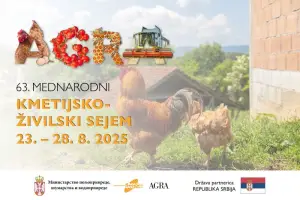 Belgrade, 22 August 2025
Belgrade, 22 August 2025Serbia partner country at international agricultural fair in Slovenia
-
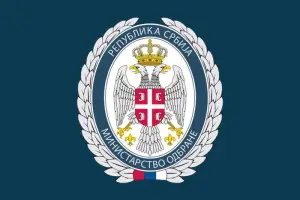 Belgrade, 20 August 2025
Belgrade, 20 August 2025Successful engagement of Serbian Armed Forces contingent in peacekeeping mission in Sinai
-
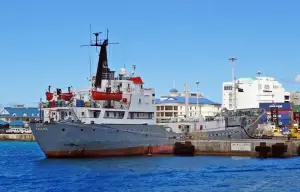 Belgrade, 18 August 2025
Belgrade, 18 August 2025Serbian police take part in international seizure of 4.8 tonnes of cocaine
-
 Belgrade, 17 August 2025
Belgrade, 17 August 2025Those responsible for incidents in Valjevo must be found, punished
-
 Кladovo, 12 August 2025
Кladovo, 12 August 2025181 fires recorded in Serbia in last 24 hours
-
 Tršić, 11 August 2025
Tršić, 11 August 2025Students of supplementary Serbian language schools in Tršić again this year
-
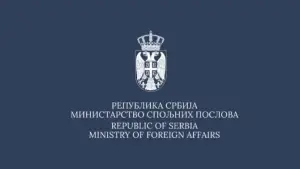 Belgrade, 2 August 2025
Belgrade, 2 August 2025Serbia firmly committed to preserving regional peace and cooperation
-
 Belgrade, 28 July 2025
Belgrade, 28 July 2025Serbian citizens advised not to travel to Croatia from 1 to 10 August
-
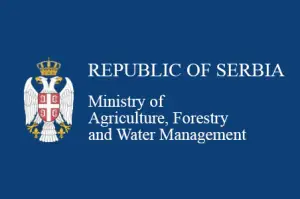 Belgrade, 28 July 2025
Belgrade, 28 July 2025Bluetongue disease confirmed on two farms near Bosilegrad
-
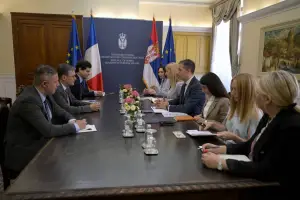 Belgrade, 24 July 2025
Belgrade, 24 July 2025Good cooperation, exceptional bilateral relations between Serbia, France
